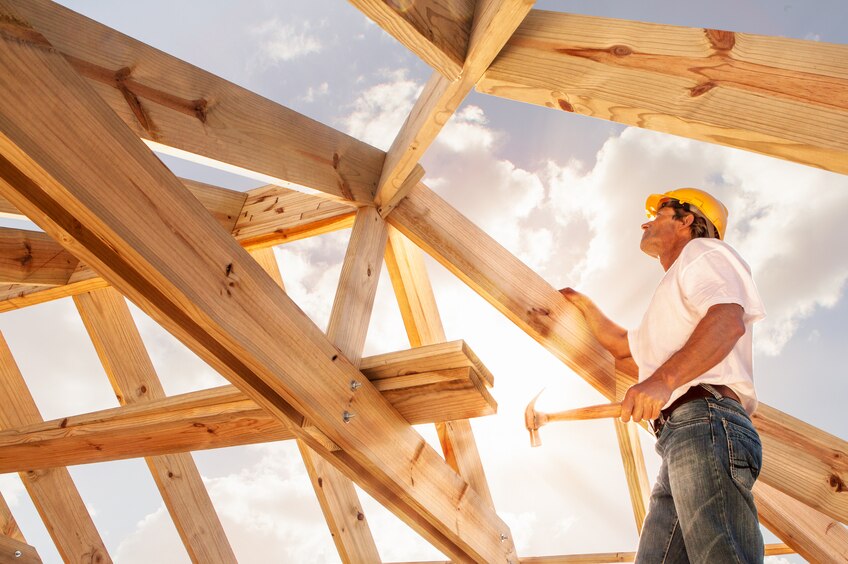Do-it-yourself home improvements continue to gain popularity, with more homeowners choosing to do the work themselves as the proliferation of how-to videos on YouTube makes it easier than ever. But not every project should be DIY — especially when it comes to your roof. If you are thinking about a DIY roof replacement, here is what you need to know.
Personal Safety
Even just walking on a roof presents challenges and dangers, especially if yours has a steep slope! Professional contractors have the right shoes and equipment, along with the experience, to make walking on a roof as safe as possible.
The U.S. Occupational Health and Safety Administration reports that falls from height are the leading cause of death in construction. Anyone working six feet or more above a lower level (so even on the ground floor or the lower story), is required to wear protective equipment that includes a personal fall-arrest system consisting of a harness and safety lines that are tied-off at an anchor point. Most homeowners are not likely to have the equipment or experience necessary to safely carry out a DIY roof replacement.
Disposing of Old Roof Material
Tearing-off your old roofing system is hard work. It's typically not possible to have a waste-disposal container on the roof with you and most people will toss the materials over the edge of the roof. That risks damage to your siding or landscaping. Professional roofing contractors will use disposal systems placed at the roof edge, either with a lift or using special trash chutes. They may also drape a catchment system around the edges of the roof, which allows materials to slide off without damaging flower beds or shrubbery.
Any torn-off material needs to be disposed of properly. You can't just place it curbside and expect your trash hauler to take it: also, roofing contractors have resources and relationships in place for safe, effective disposal.
Complexities of a Roofing System
An asphalt shingle roofing system involves more than just nailing shingles to the roof deck. It's a complete system involving underlayment, leak barriers, proper ventilation, shingles, flashing, and the right accessories.
All the pieces must work together to provide proper waterproofing protection for the home. If any one of these things isn't done correctly, it can lead to water intrusion and property damage. And since damage caused by roof leaks is a leading cause of insurance claims, it's important to make sure your roof is expertly installed by a reputable (i.e., manufacturer-certified and properly trained) contractor. Some insurance claims can be denied by insurers on the basis of improper installation.
Specialized Equipment
A DIY roof replacement requires more than a hammer and nails. Hand-nailing shingles is very time-consuming and can make a project drag out over several days. Professional roofing contractors rely on pneumatic coil roofing nail guns as well as compressors and hoses that can support fast, continuous nailing.
Speed is nice when driving nails, but the placement of those nails is also key to the performance of the roofing system. Asphalt shingles have specific nailing zones known as the common bond area where the nails must be placed. Nailing outside the zone or over- or under-driving the nails can jeopardize the integrity and performance of the roof.
Cost vs. Savings
While it's true that a DIY roof replacement would cost less than hiring a professional contractor in the short term, it's the long-term costs you have to think about. If anything is done improperly during the installation, your home and belongings will be at risk of water intrusion and severe damage.
It's also likely you won't be eligible for enhanced warranty protection if your installation isn't carried out by a certified contractor. Most professionals offer workmanship warranties along with the manufacturer's warranty. That way, if you experience problems after the installation, your coverage will tend to be much more extensive.
If you've decided hiring a professional contractor is the way to go, visit GAF's contractor locator to find a trusted and certified contractor* near you.
*Contractors enrolled in GAF certification programs are not employees or agents of GAF, and GAF does not control or otherwise supervise these independent businesses. Contractors may receive benefits, such as loyalty rewards points and discounts on marketing tools from GAF for participating in the program and offering GAF enhanced warranties, which require the use of a minimum amount of GAF products.

